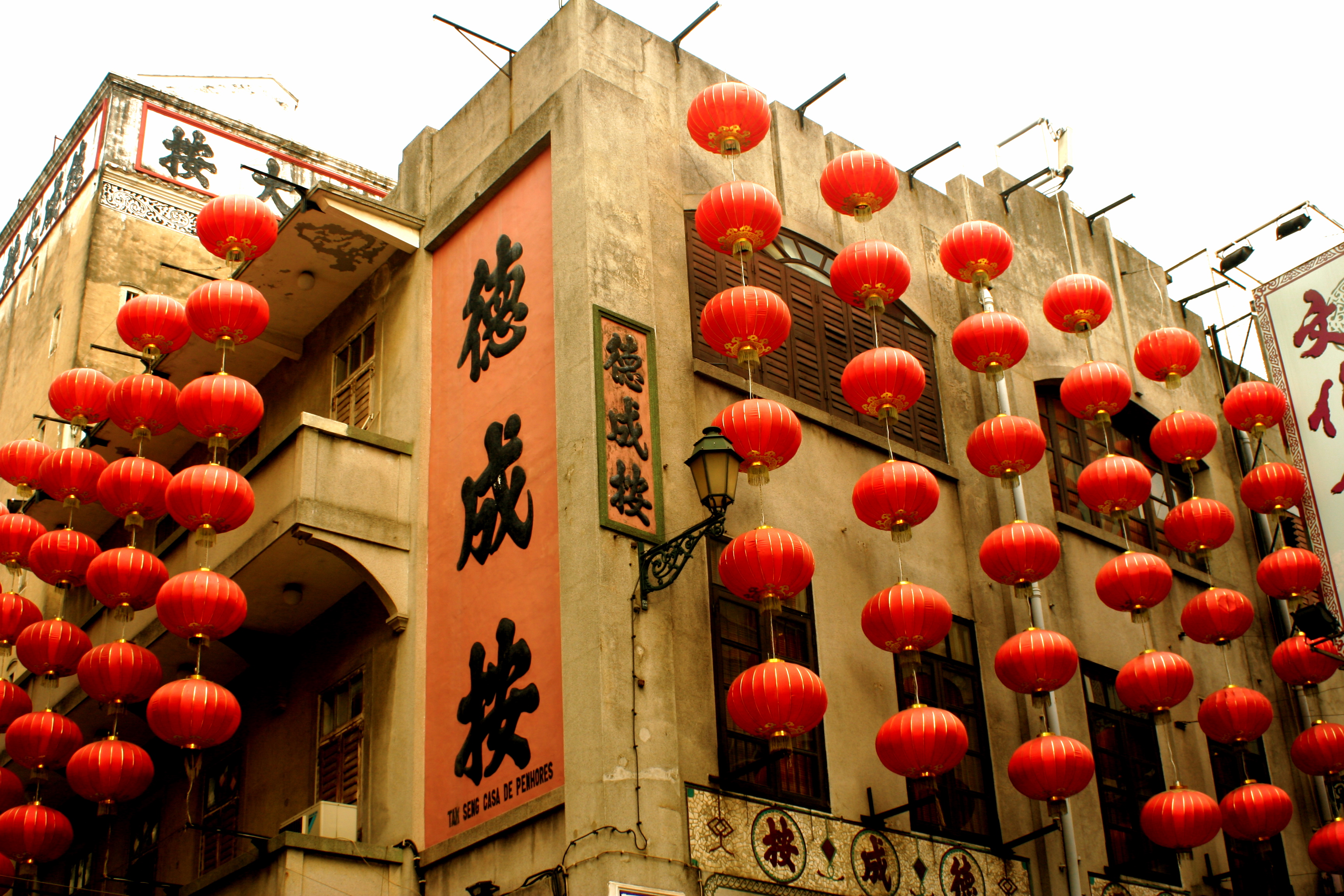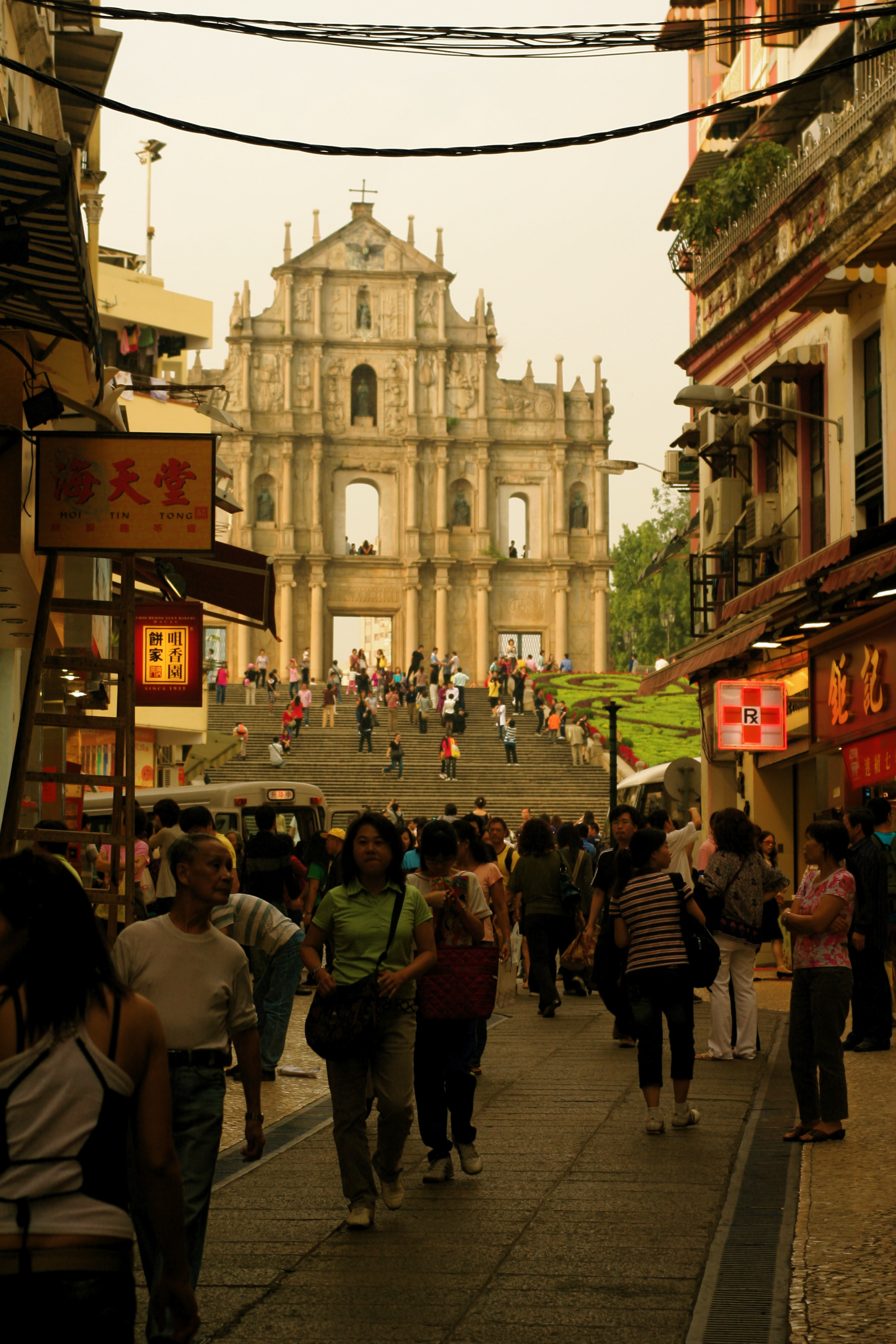I can’t help but look for them all over the city; strings of red Chinese lanterns above the Macanese streets. They hang in rows of graceful symmetry, so beautifully oblivious and suspended above the din below; above vendors handing out samples of beef jerky or almond cookies from wide, woven trays; above the black and white tiled streets of Senado Square, along which crowds wind their way to the ruins of St. Paul’s.
At night they glow, illuminated orbs as if lit by the candles that burn in hollowed pumpkins. The gold of their wire-ribbed edges shines in the light of neon signs and I know this why I am here. Despite being stopped by the airport police and asked for my passport; despite mix-ups of bus lines and routes across the city; despite the unease of being alone in a foreign city, I am here for a mystery.
The mystery of Macau, the mystique of an island only seven square miles, home to half a million, yet with a history not easily explained. Often remarked upon for its fusion of cultures, Macau is where east meets west – or so it’s said. Where the Portuguese had arrived in the 1550s and governed until 1999, when they returned the island to China much like the British with Hong Kong.
Macau now rules itself largely autonomously, termed a Special Administrative Region. Brochures cite both Portuguese and Chinese as official languages and street signs are often written in both, but the fact that the island is currently 97% Chinese discourages me from believing so readily in the “path to convergence” the Macau Museum extols. Has there truly been an intersection of two cultures or just a parallel existence?
In search of this, I ascend the stairs leading to the ruins of St. Paul’s, its taupe stone façade all that remains from the Catholic cathedral that last burnt down in 1835. I visit A-Ma Temple, the oldest of its kind in the city, constructed in 1488. Like the red of the lanterns, yellow incense spirals draw my eye in and around their coils that burn slowly from the rafters of the Buddhist temple’s six pavilions.
I walk the Avenida da Praia, pausing in front of each villa belonging to the Taipa Houses Museum. The white-trimmed porticos and mint green walls of the houses stand as remnants of the island’s colonial days, where Portuguese officials resided in the 1920s.
From a bench along the avenue’s esplanade, I look out across a tree-lined, man-made lake towards high-rising casinos across the water. It’s a strange city, indeed, where signs painted with Chinese characters hang from buildings of Portuguese design. It’s a dichotomous place that isn’t just “one country, two systems,” as the Chinese government proclaims, but even one city, two worlds. A place where reds and yellows mix with pastoral pastels.
A place, perhaps, where its true magic lies in the co-existence of such colors; in the possibility of such a limitless palette.



This is beautiful prose: intelligent and perceptive.
Well done.
Thank you so much, Professor! 🙂 I appreciate your kind words and thank you for taking the time to read my writing.